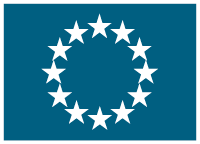Geometric control methods for heat and Schroedinger equations
(GeCoMethods)
Start date: May 1, 2010,
End date: Apr 30, 2016
PROJECT
FINISHED
"The aim of this project of 5 years is to create a research group on geometric control methods in PDEs with the arrival of the PI at the CNRS Laboratoire CMAP (Centre de Mathematiques Appliquees) of the Ecole Polytechnique in Paris (in January 09). With the ERC-Starting Grant, the PI plans to hire 4 post-doc fellows, 2 PhD students and also to organize advanced research schools and workshops. One of the main purpose of this project is to facilitate the collaboration with my research group which is quite spread across France and Italy. The PI plans to develop a research group studying certain PDEs for which geometric control techniques open new horizons. More precisely the PI plans to exploit the relation between the sub-Riemannian distance and the properties of the kernel of the corresponding hypoelliptic heat equation and to study controllability properties of the Schroedinger equation. In the last years the PI has developed a net of high level international collaborations and, together with his collaborators and PhD students, has obtained many important results via a mixed combination of geometric methods in control (Hamiltonian methods, Lie group techniques, conjugate point theory, singularity theory etc.) and noncommutative Fourier analysis. This has allowed to solve open problems in the field, e.g., the definition of an intrinsic hypoelliptic Laplacian, the explicit construction of the hypoelliptic heat kernel for the most important 3D Lie groups, and the proof of the controllability of the bilinear Schroedinger equation with discrete spectrum, under some ""generic"" assumptions. Many more related questions are still open and the scope of this project is to tackle them. All subjects studied in this project have real applications: the problem of controllability of the Schroedinger equation has direct applications in Nuclear Magnetic Resonance; the problem of nonisotropic diffusion has applications in models of human vision."
Get Access to the 1st Network for European Cooperation
Log In
or
Create an account
to see this content
Details
- 100% € 785 000,00
-
 FP7-IDEAS-ERC
FP7-IDEAS-ERC
- Project on CORDIS Platform
1 Partners Participants
CENTRE NATIONAL DE LA RECHERCHE SCIENTIFIQUE CNRS
€ 785 000,00- Véronique Debisschop
- RUE MICHEL ANGE 3 75794 PARIS (France)
CENTRE NATIONAL DE LA RECHERCHE SCIENTIFIQUE
€ 785 000,00- Véronique Debisschop
- Rue Michel -Ange 3 75794 PARIS (France)